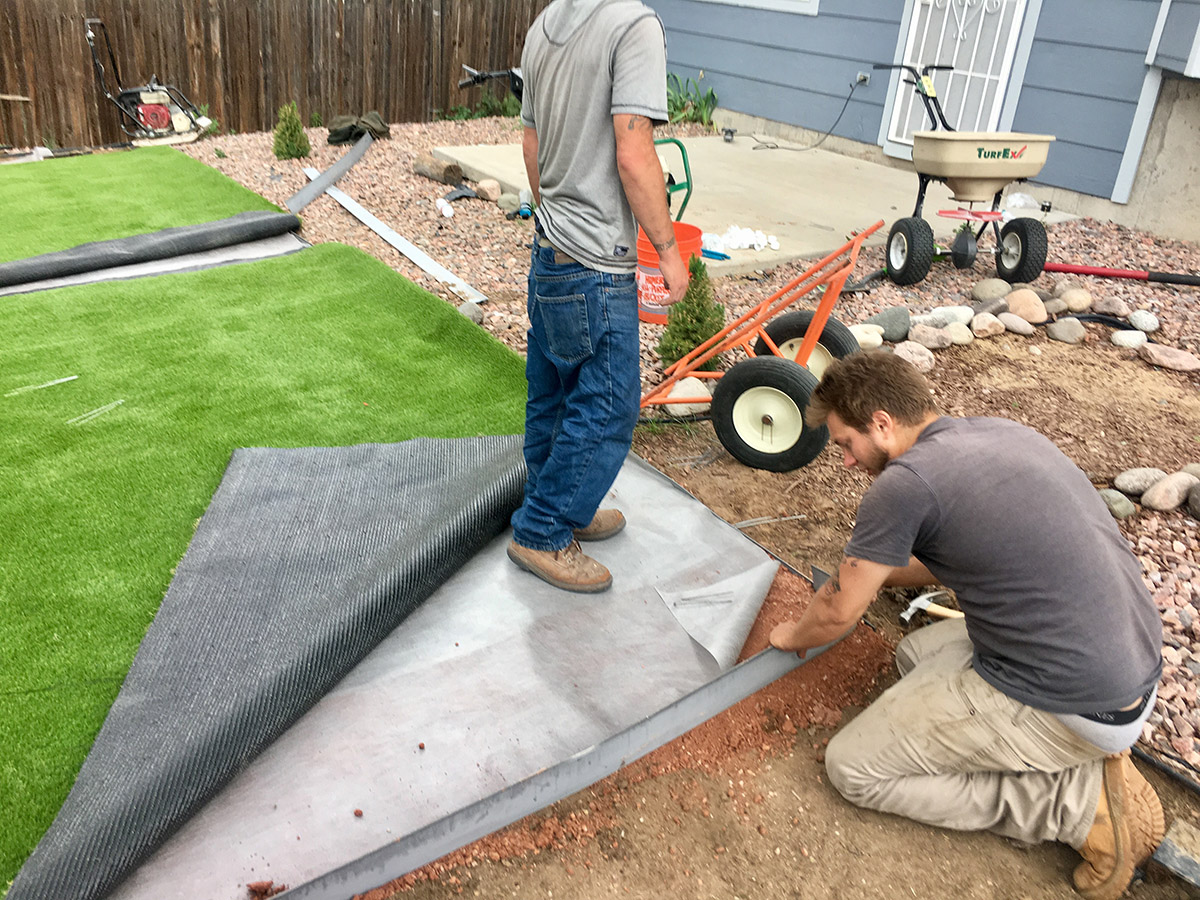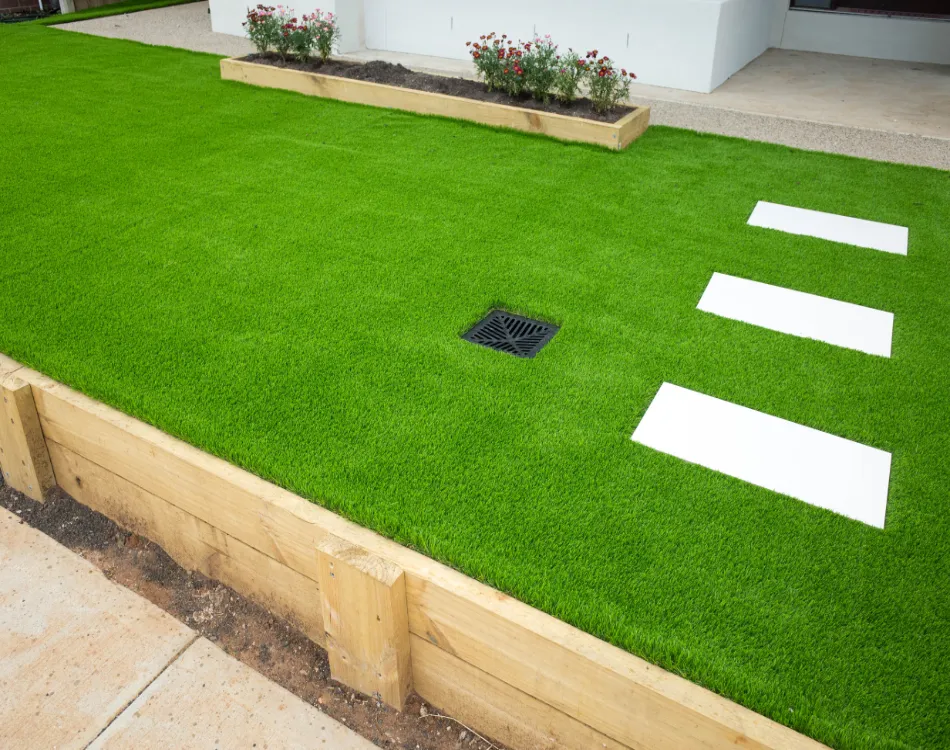Look Into the Environmental Perks of Opting for Artificial Lawn Solutions
The adoption of artificial turf options offers a compelling opportunity to address pressing ecological challenges. By substantially minimizing water usage and reducing the application of dangerous chemicals, these alternatives not only promote lasting landscape design however additionally secure neighborhood environments. The reduced carbon impact connected with reduced upkeep tasks adds to an extra lasting technique to land monitoring. The ramifications of these benefits extend past simple conservation initiatives, increasing questions regarding their long-term effect on habitat preservation and overall environmental balance. Discovering these measurements exposes a complicated interaction worth considering.
Water Conservation Advantages
One of the most significant advantages of man-made grass is its capability to conserve water. In comparison, fabricated grass does not need watering, significantly reducing the total need for water resources.
By eliminating the demand for regular watering, man-made turf contributes to lasting landscape practices and assists minimize the environmental effect of too much water consumption. Additionally, the preservation of water includes the decrease of runoff, which can cause dirt disintegration and waterway pollution.
Additionally, the installment of synthetic grass allows house owners and municipalities to allocate water sources more successfully, concentrating on important uses such as drinking water and agriculture. The shift towards synthetic grass not only promotes responsible water usage but also straightens with more comprehensive ecological objectives focused on protecting natural deposits.
As communities increasingly prioritize sustainability, the water preservation advantages of synthetic grass provide a compelling case for its fostering in household and business landscaping tasks.
Lowered Chemical Use
The transition to artificial lawn significantly lowers the reliance on chemical treatments generally utilized in natural grass upkeep. Standard turf monitoring generally entails the application of plant foods, chemicals, and herbicides to advertise growth and control bugs. These chemicals can position risks to human wellness, local wild animals, and the environment, adding to soil and water contamination.
On the other hand, man-made turf removes the need for these harmful materials. Once set up, it requires very little upkeep, mostly consisting of normal cleaning and occasional infill replenishment. This reduction in chemical use not only profits the immediate setting however additionally adds to wider ecological stability. By decreasing the release of synthetic substances right into the ecological community, synthetic grass promotes healthier dirt and water supply.
Furthermore, the absence of chemical overflow connected with synthetic grass installations assists secure neighborhood rivers from pollution, supporting water life and preserving biodiversity. Artificial turf companies phoenix. As areas increasingly focus on lasting techniques, choosing synthetic grass provides a sensible remedy that straightens with ecological conservation goals. Through this change, building proprietors can delight in lush green rooms without endangering ecological wellness, leading the way for a more lasting future
Lower Carbon Footprint

Moreover, the installment of synthetic lawn can result in considerable water preservation. All-natural lawns require substantial quantities of water for irrigation, which not only includes in the carbon impact related to water extraction and therapy yet also strains regional water sources. In comparison, synthetic grass requires marginal upkeep, calling for no watering, thereby substantially lowering water usage and its associated energy costs.
Furthermore, the long life of synthetic grass adds to its reduced carbon impact. With a lifespan of up to 15 years or more, the need reference for frequent replacements is decreased, resulting in less waste and reduced energy usage in manufacturing and throwing away typical yard choices. On the whole, fabricated lawn offers a lasting choice for ecologically mindful landscaping.
Habitat Conservation
Environment preservation is a vital consideration in the debate over landscape design selections, especially when comparing artificial lawn to all-natural turf. Natural grass yards usually call for substantial maintenance, including using fertilizers, pesticides, and herbicides, which can adversely impact local communities. These chemicals can leach into the dirt and rivers, damaging indigenous flora and fauna and interfering with local environments.
In comparison, synthetic grass offers an opportunity to reduce the ecological impact of landscape design. By choosing for artificial turf, homeowners can reduce the disruption of all-natural environments connected with traditional yard care techniques. Synthetic grass eliminates the requirement for dangerous chemicals, thus protecting neighboring wild animals and maintaining the integrity of surrounding ecosystems. The installation of synthetic turf can lead to the conversion of former lawn areas into more biodiverse landscapes, such as pollinator gardens or indigenous plant areas, which can sustain local wild animals.
Eventually, the transition to synthetic grass not only conserves water and minimizes upkeep efforts yet likewise fosters an extra harmonious connection in between human activities and the resource all-natural setting, promoting environment conservation while doing so.
Long-Term Sustainability
Long-term sustainability is an essential consider evaluating the benefits of man-made lawn over conventional yard yards. One of one of the most significant advantages of synthetic grass is its sturdiness; it can last up to 15-20 years with marginal upkeep, whereas natural lawn calls for constant reseeding and substitute. This long life minimizes the need for consistent sources, such as water, plant foods, and pesticides, which are important for maintaining a healthy yard lawn.
Additionally, synthetic lawn contributes to a reduction in carbon exhausts linked with lawn care devices. Standard yards often need gas-powered lawn mowers, leaners, and blowers, all of which add to air contamination. Arizona artificial turf. In contrast, man-made lawn eliminates the demand for such devices, promoting a cleaner atmosphere
Additionally, look at here now the manufacturing of synthetic grass progressively utilizes recycled materials, enhancing its sustainability profile. As suppliers adopt environment-friendly methods, the environmental footprint of synthetic grass proceeds to diminish.

Conclusion
The adoption of synthetic lawn options provides substantial environmental benefits, including significant water preservation, lowered dependence on dangerous chemicals, and a lower carbon footprint. Moreover, fabricated lawn help in preserving natural habitats by decreasing land disruption and advertising long-term sustainability through making use of long lasting products. Jointly, these variables highlight the capacity of man-made lawn to contribute positively to ecological health and offer a practical alternative to traditional landscape design methods in an increasingly resource-conscious world.
In contrast, fabricated grass does not require watering, dramatically decreasing the overall need for water sources. By lessening the launch of synthetic substances right into the environment, synthetic turf advertises much healthier dirt and water systems.
In addition, the installment of artificial lawn can result in substantial water conservation. In comparison, artificial grass needs minimal upkeep, needing no watering, thereby considerably minimizing water use and its linked energy costs.
